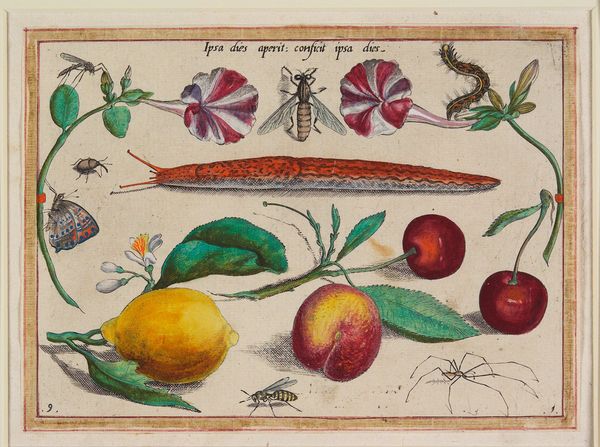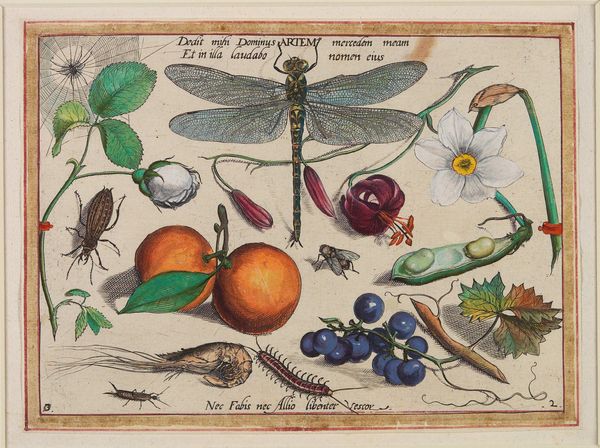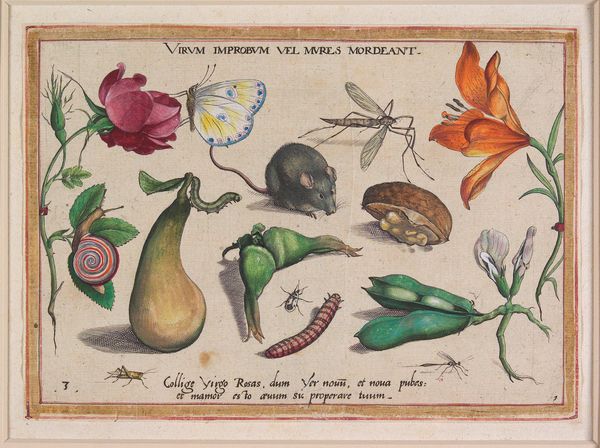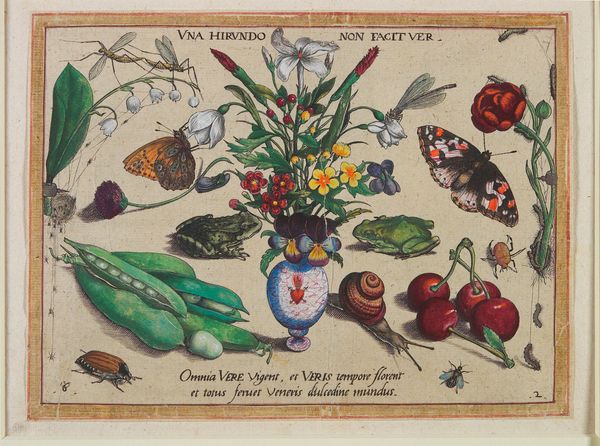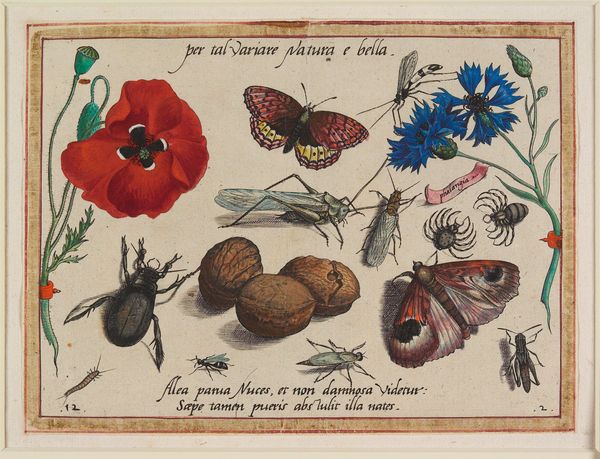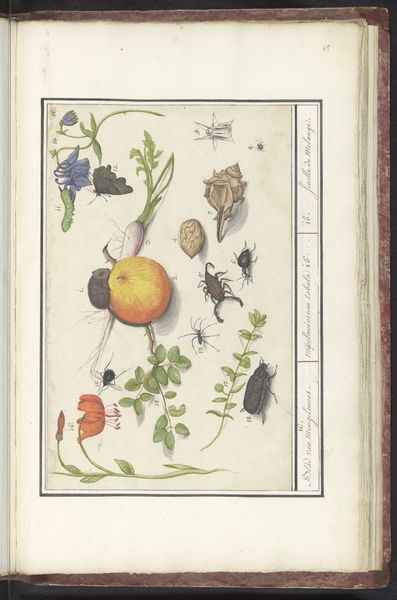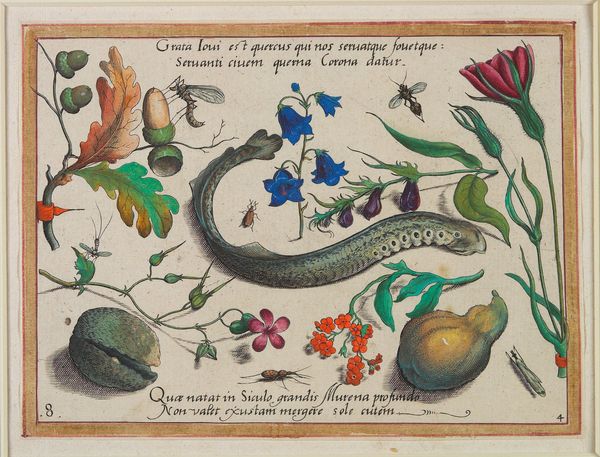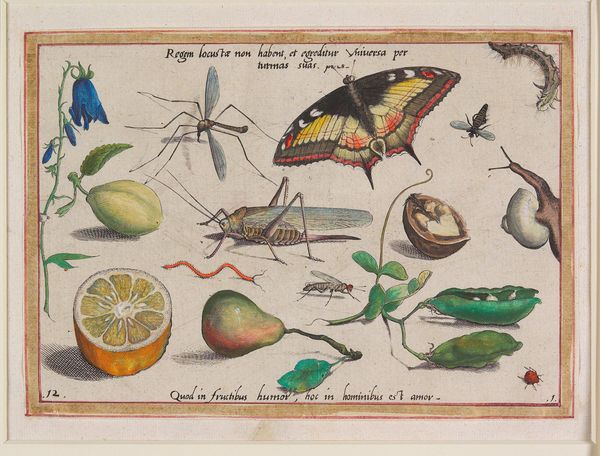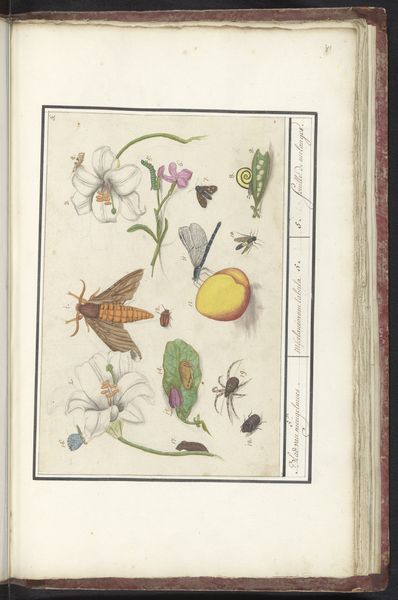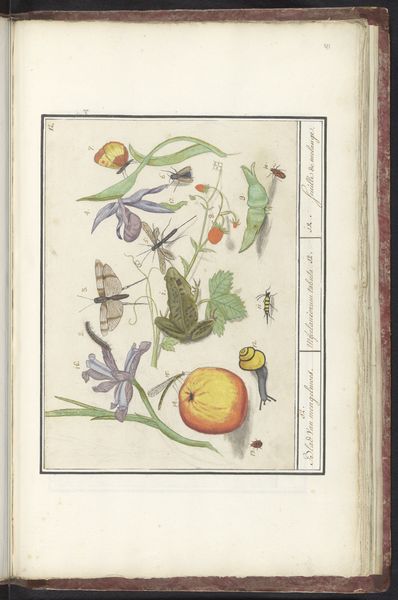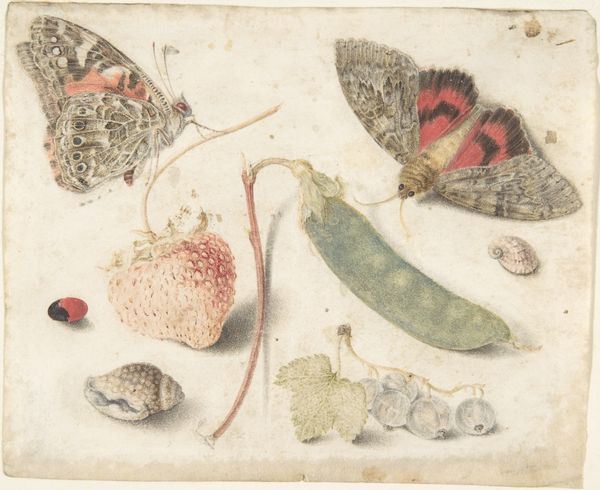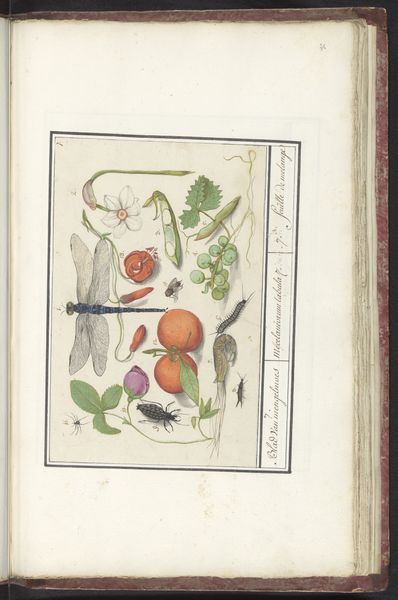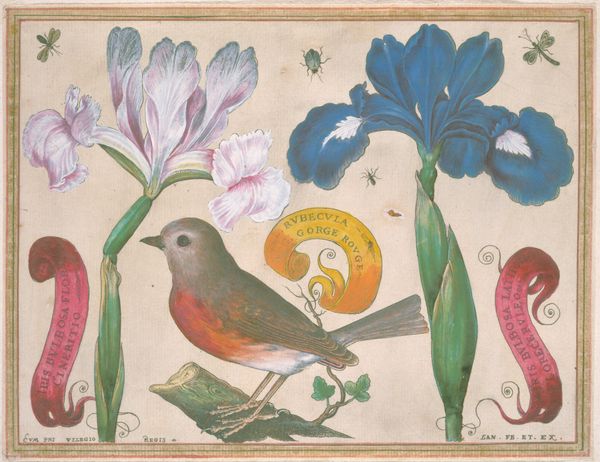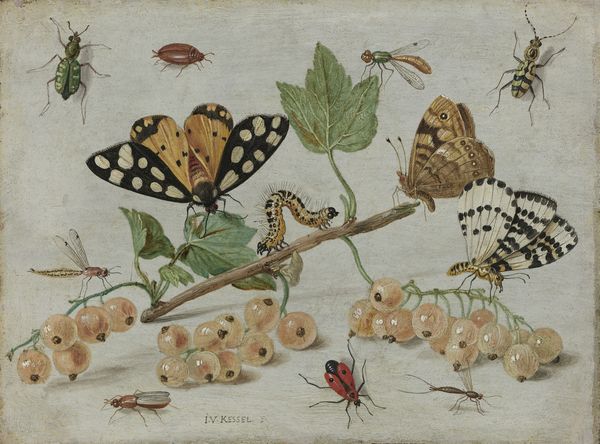
drawing, print, paper, ink
#
drawing
# print
#
mannerism
#
paper
#
11_renaissance
#
ink
#
miniature
Dimensions: 6 1/4 x 8 3/4 in. (15.88 x 22.23 cm) (plate)
Copyright: Public Domain
Editor: This is "Amicitijs non utendum ut flosculis," a 1592 drawing and print by Jacob Hoefnagel, housed at the Minneapolis Institute of Art. It's such a meticulously rendered little scene filled with insects, plants, and a vibrant apple. It’s captivating in its detail. How do you interpret this work, considering its materials and context? Curator: For me, it's about the materiality and production of knowledge in the late 16th century. Hoefnagel meticulously renders each element, from the veins on the leaves to the segments of the insects' bodies, suggesting a very hands-on investigation of the natural world. What processes and social structures do you think facilitated this type of detailed observation and reproduction? Editor: That's fascinating. I hadn’t considered the link between detailed observation and the means of reproducing it through printmaking. It makes me think about the labor involved in both the scientific study and the artistic creation. The paper, inks, the printing press... Curator: Exactly. And think about the Latin text, carefully inscribed, suggesting an elite, educated audience who had access to both the print and the classical knowledge embedded within it. Is this just an aesthetic object or is it more akin to a scientific record created for distribution and study? Editor: I see what you mean. The text does make it feel less like a simple nature scene. It pushes me to see this as more of a constructed piece intended to be educational. But who had access to such knowledge at that time? Curator: Access was limited, no doubt, by social structures. Consider the cost of materials and the time required for this type of work. It reveals a specific system of patronage, labor and consumption. What can the artist’s focus tell us about the early scientific method and the labor required? Editor: It’s amazing how a seemingly straightforward image reveals such complex questions about knowledge, access, and the processes behind artmaking. Thanks for expanding my understanding of this intricate work. Curator: Absolutely! It highlights how the materiality and means of production are deeply intertwined with the social and intellectual context. Looking at art this way always provides richer insights.
Comments
No comments
Be the first to comment and join the conversation on the ultimate creative platform.
